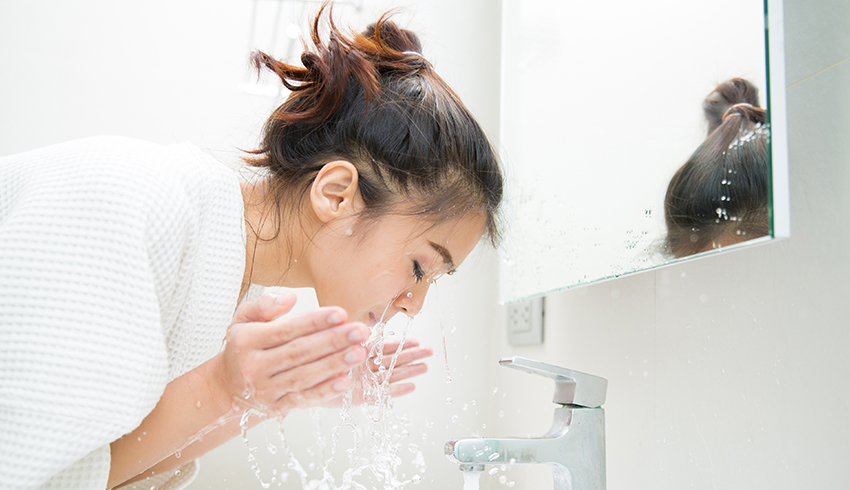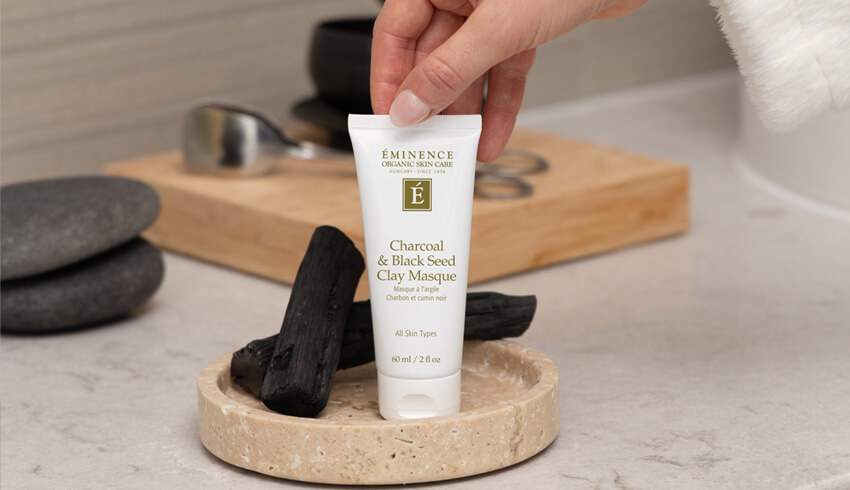
Have you spent years watching YouTube beauty gurus and scouring online forums for skin care tips? Or maybe you’ve picked up fun facts from your mom that you apply to your own beauty routine? This might be hard to hear, but we all have skin care beliefs that we cling to, blindly. Dig deeper into these beliefs and you’ll discover which ones are more fiction than fact. Read on for a debunking of the most popular skin care myths.
Myth 1: Your Skin Ages The Same Way As Your Mom’s
Genetics do play a significant role in the characteristics of your skin, especially in pore size, tone and texture. However, healthy skin care habits and reducing environmental stressors play a more important role in aging gracefully. According to Skin Inc, “The biggest culprit in aging is sun exposure and your drinking, smoking, stress ... Sleep habits play a role too." The solution is simple:
- Avoid habits like smoking and alcohol
- Miminize your stress levels
- Actively protect your skin against sun damage. This means covering up with a hat, sunglasses and wearing an SPF moisturizer or sunscreen daily (cloudy days included!).
Myth 2: Acne Stops After Your Teenage Years
It’s an unfortunate skin care fact that acne doesn’t stop after your teenage years, because the hormones that cause acne don't stop. Hormonal changes during the lifetime can cause a resurgence of breakouts well beyond your teens. As men age, breakouts can occur due to a drop in testosterone levels. For women, hormones fluctuate on a monthly basis, which can cause pesky pimples that appear on the jawline, chin, forehead and neck area. Do you notice hormonal changes affecting your skin or causing hormonal acne? Look for skin care products that reduce oil on the complexion and work to improve the appearance of hormonal aging and problem skin.
Myth 3: Oily Skin Types Can’t Use Facials Oils
The right facial oils can be beneficial to oily skin, so you don’t need to avoid them. We don’t blame you for thinking applying oil to your face goes against everything you thought you knew about skin care. The truth is that instead of making skin look greasy or clog pores, facial oils play a role in balancing sebum production in the skin. Applying oil to the face calms overactive sebaceous glands, which work to promote a more balanced and even-looking skin tone. Many facial oils also have secondary benefits and can also work to increase hydration, improve texture or calm the appearance of problem skin.
Myth 4: Using Body Scrubs On Your Face Is A Safe Exfoliation Method
We’re only going to say this once. No! Your face should not be scoured with a physical body scrub like a dirty bathtub. Although we’re big fans of exfoliation, using a very gentle chemical exfoliator or powder on your face is the only way to safely exfoliate the delicate skin on your face. A heavy-duty scrub combined with intense rubbing can lead to tiny tears in the skin, leading to redness or irritation that can weaken the skin care barrier.
If you love the satisfaction of a facial scrub (no judgement, we promise) there are physical exfoliants that are gentle enough to slough off dead skin safely and softly. We’d advise you to put down your intense body scrubs and reach for a gentle exfoliant made of fine particles, such as our Strawberry Rhubarb Dermafoliant.
Myth 5: Skip Sunscreen Occasionally For Vitamin D
While it’s true that the body generates vitamin D from UVB rays, the American Academy of Dermatology recommends that people get their vitamin D from their diet and supplements as opposed to purposeful sun exposure. Although Vitamin D deficiency can affect bones and the body’s overall health, a greater risk is exposing your skin to sun damage and the danger of skin cancer. Our advice? Limit your exposure to UV rays by:
- Wearing light clothing, a hat and sunglasses
- Using sunscreen daily
- Staying in the shade
- If you’re worried about a lack of vitamin D, you can take vitamin D tablets instead
Myth 6: Cleansing Should Make Your Skin Feel Squeaky Clean
Is your skin feeling “squeaky clean” or tight after your daily cleansing? This could be a sign that washing your face has removed more than just make up and dirt and is stripping the natural oils from your skin. In addition, maybe when you were a child, your grandmother grabbed a rough washcloth and scoured your face until it was spotless. Besides the fact that this was probably extremely unpleasant, any extended rubbing irritates the skin and damages the skin’s barrier. For a regular routine like washing your face, it’s important to remember that we’re cleansing (not cleaning) and the process should be more gentle than vigorous.
We recommend you cleanse with warm (read: not hot) water. Work the cleanser around the face softly in circular motions with the fingers or a washcloth and then rinse with warm water. It’s important to use a cleanser suitable for your skin type that softly cleanses the face without stripping the natural oils from your skin.
Myth 7: It’s Fine To Tan As Long As You Don’t Burn
This is definitely a summer skin care myth — there is no such thing as a healthy sun tan. A skin care fact you might not know is that when your skin is exposed to UV radiation it attempts to protect itself by overproducing the pigment melanin which creates the tan. Every time your skin changes color, it’s an indication that your skin has been damaged by the UV rays from the sun even if you haven’t been "burned" in the red or painful sense. Try one of our SPF moisturizers for two-in-one skin care to protect yourself from sun damage on a daily basis. We’re big fans of our Lilikoi Daily Defense Moisturizer SPF 40, which will hydrate and revitalize your skin while providing the sun protection you need on a regular basis.
Interested in more skin care myths and facts? Here are five more you can watch from our Lead Skin Care Trainer Natalie Pergar.
Were you surprised by these debunked skin care myths? Have you brushed up on a few skin care facts? Let us know in the comments below.


